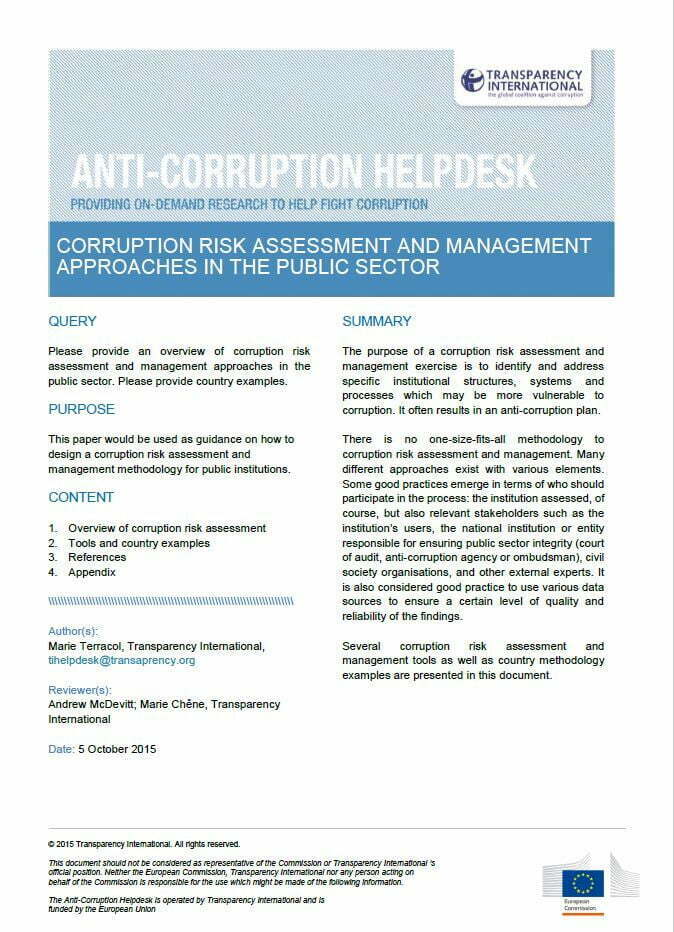
The purpose of a corruption risk assessment and management exercise is to identify and address specific institutional structures, systems, and processes that may be most vulnerable to corruption. It often results in an anti-corruption plan.
There is no single methodology for corruption risk assessment and management. There are many different approaches with various elements. Some good practices emerge in terms of who should participate in the process: the evaluated institution, of course, but also relevant stakeholders, such as the users of the institution, the national institution or entity responsible for ensuring the integrity of the public sector (court of auditors, anti-corruption agency or ombudsman), civil society organizations, and other external experts. It is also considered good practice to use multiple data sources to ensure a certain level of quality and reliability of the results. Various corruption risk assessment and management tools, as well as examples of country methodologies, are presented in this paper.
Year of publication: 2015
Author: Marie Terracol – Anti-Corruption Helpdesk of Transparency International
Coordinator of Transparency International’s Whistleblower Program in Europe and Central Asia. He joined Transparency International’s International Conventions unit in 2011. Before that, she was an intern at the French Permanent Mission to the UN in Vienna (Austria) and at the International Atomic Energy Agency (IAEA). She studied International and European Law at the University of Aix en Provence and University College London.
Promoter Entity: European Commission
More information: https://knowledgehub.transparency.org/helpdesk/corruption-risk-assessment-and-management-approaches-in-the-public-sector
ISBN: 978-989-9004-25-2






